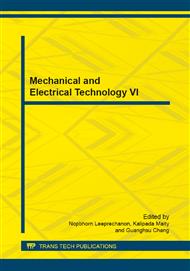p.316
p.322
p.327
p.332
p.337
p.342
p.347
p.352
p.359
Evaluating the III-Posedness of Inverse Problem to Size Flaws from Eddy Current NDT Signals Obtained with an Absolute Type Probe
Abstract:
This study discusses the applicability of eddy current testing to the non-destructive evaluation of the depth of a flaw. Three-dimensional finite element simulations are carried out to calculate eddy current signals due to a flaw, and subsequent calculations correlate the difference between signals due to two flaws with the difference between the depths of the flaws. Standard deviation of the difference between the depths of the flaws is used to discuss the ill-posedness of the problem. A flaw is modeled as a sufficiently long rectangular region with a constant width and uniform electrical conductivity; an absolute pancake probe is considered. This study reveals that lift-off and coil diameter do not have a large effect on the ill-posedness, which supports that it is reasonable to decide parameters in actual inspections so that signal-to-noise ratio is maximized. The results obtained also indicate the difficulty in evaluating the depth of a flaw deeper than 1 mm using the signals obtained using an absolute pancake probe.
Info:
Periodical:
Pages:
337-341
Citation:
Online since:
August 2014
Authors:
Price:
Сopyright:
© 2014 Trans Tech Publications Ltd. All Rights Reserved
Share:
Citation:


